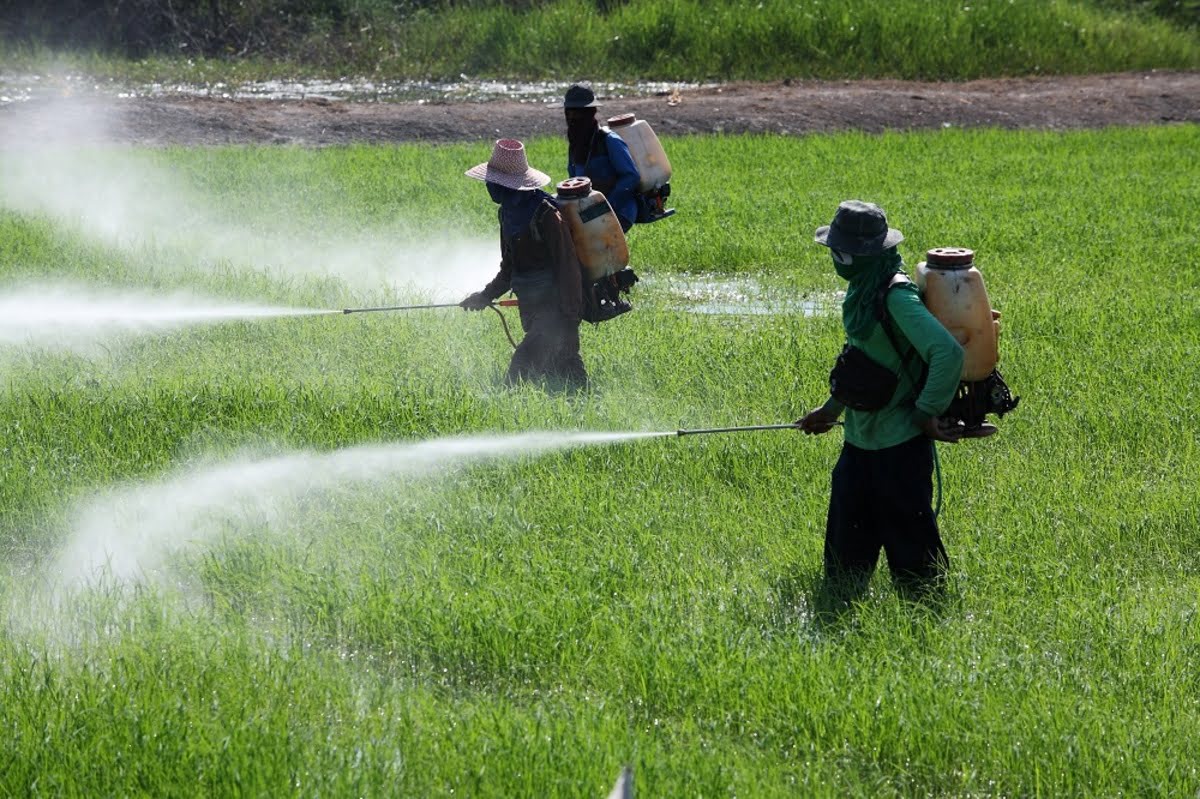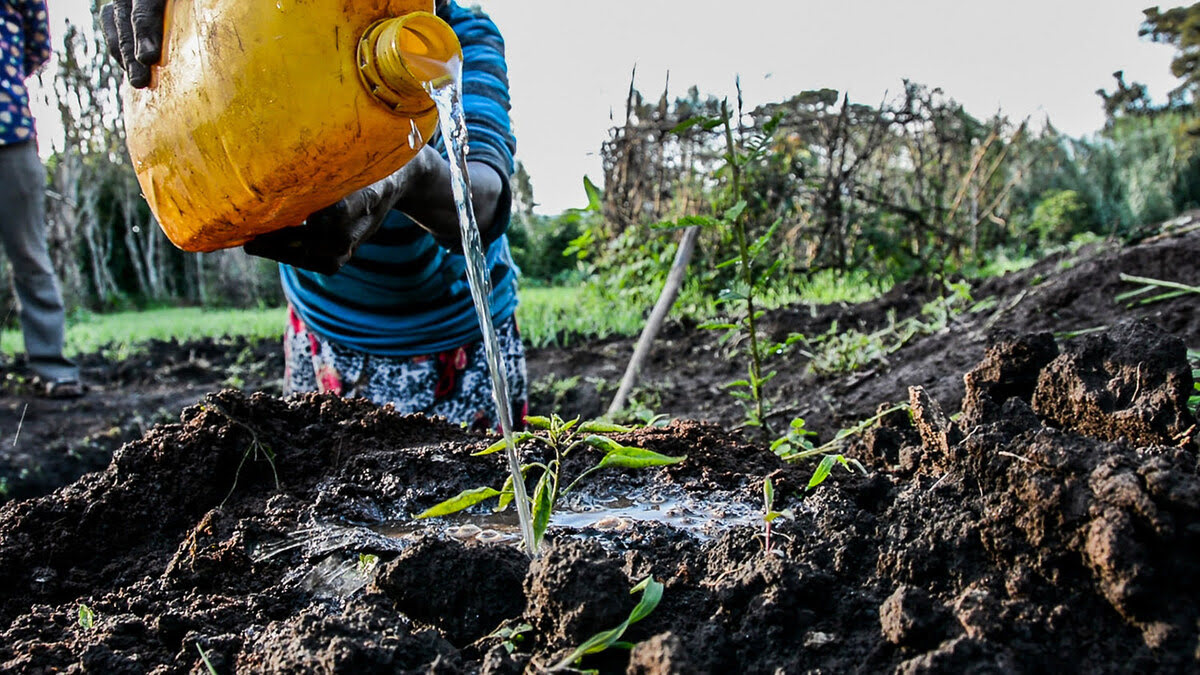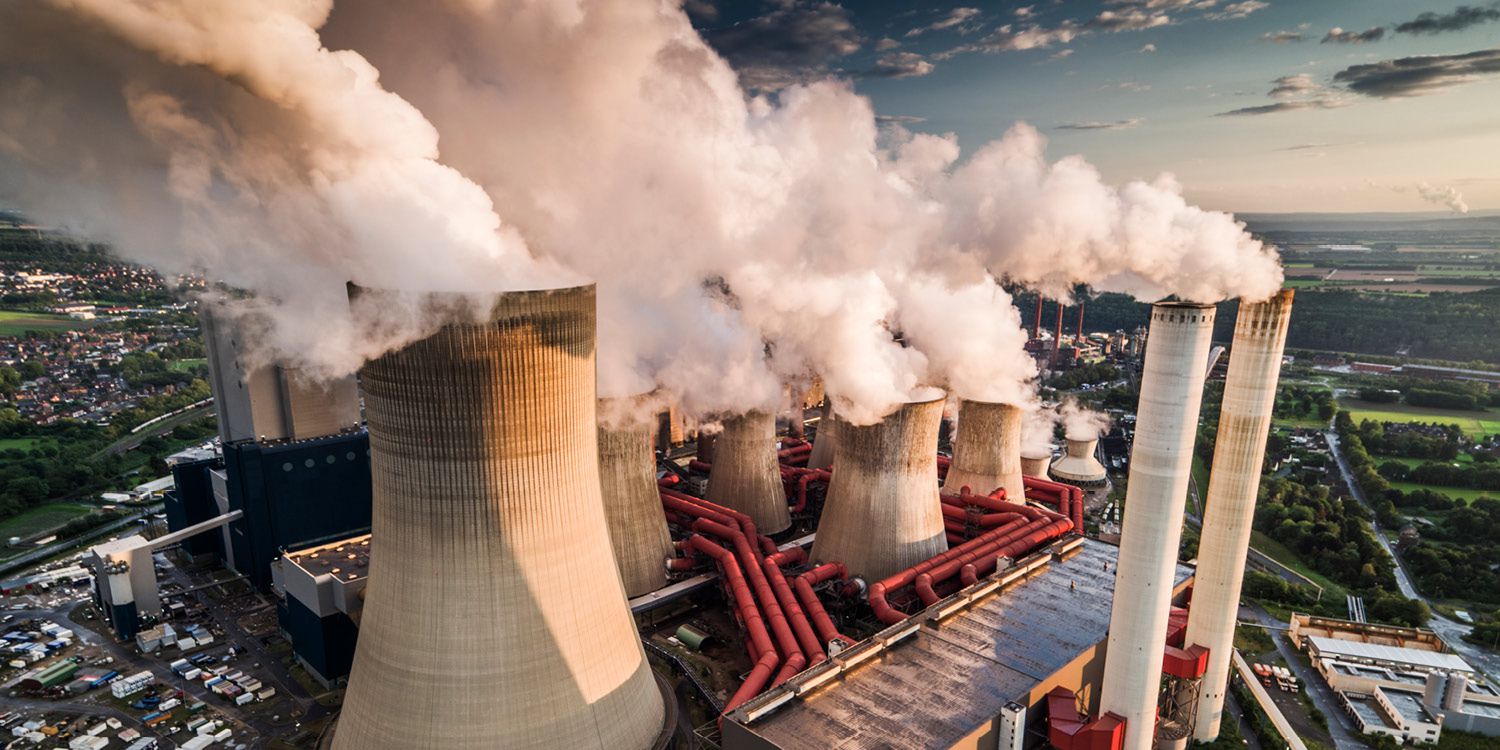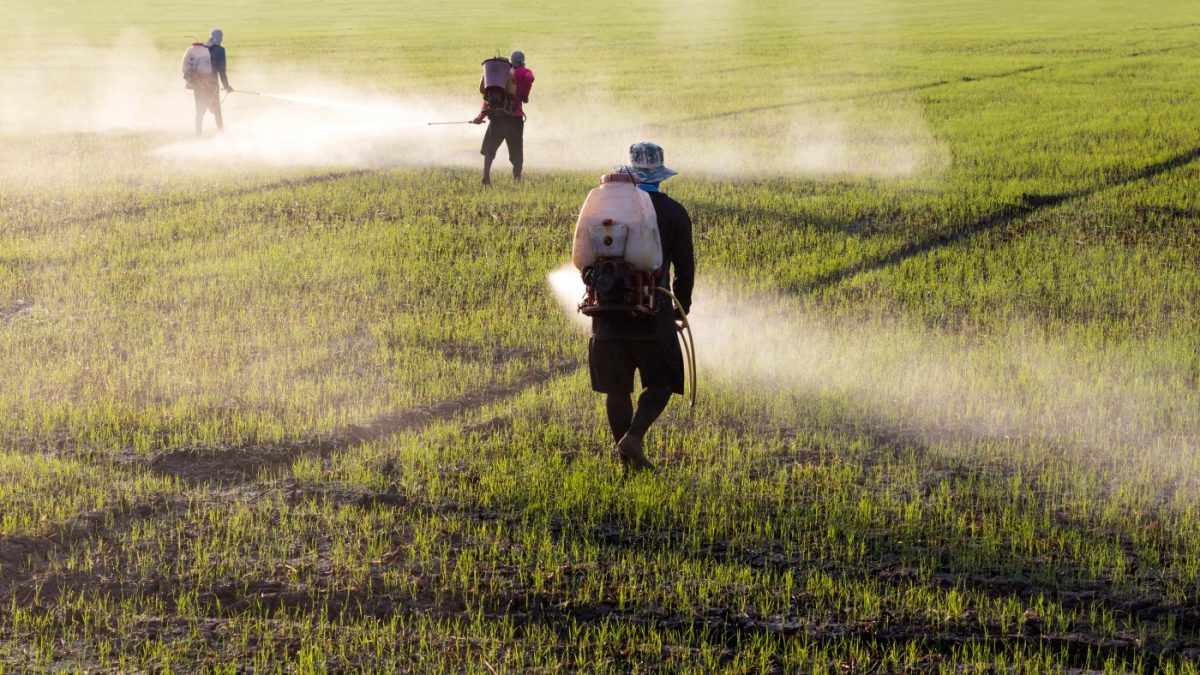Home>Gardening Basics>Understanding Soil>What Causes Soil Degradation


Understanding Soil
What Causes Soil Degradation
Published: February 12, 2024
Learn about the factors leading to soil degradation and understand the importance of soil conservation. Explore the causes and solutions to protect and improve soil health. Gain insights into understanding soil and its impact on the environment.
(Many of the links in this article redirect to a specific reviewed product. Your purchase of these products through affiliate links helps to generate commission for Chicagolandgardening.com, at no extra cost. Learn more)
Table of Contents
Introduction
Soil degradation is a critical environmental issue that impacts the productivity of land and the health of ecosystems. It refers to the decline in soil quality, resulting in the deterioration of its agricultural potential and overall functionality. Various human activities and natural processes contribute to soil degradation, leading to widespread ecological and socioeconomic consequences. Understanding the causes of soil degradation is essential for implementing effective conservation and restoration efforts. In this article, we will explore the primary factors that contribute to soil degradation, shedding light on the interconnected relationship between human actions and environmental degradation.
By delving into the root causes of soil degradation, we can gain insights into the complex dynamics that influence the health and sustainability of our planet’s soil resources. From deforestation and overgrazing to industrialization and climate change, each factor plays a distinct role in shaping the landscape of soil degradation. Through this exploration, we aim to raise awareness about the importance of responsible land management and the preservation of soil quality for future generations.
Deforestation
Deforestation, the widespread clearing of forests for agricultural, industrial, and urban development purposes, significantly contributes to soil degradation. The removal of trees and vegetation disrupts the delicate balance of ecosystems, leading to a range of adverse effects on soil quality and stability.
One of the primary impacts of deforestation on soil degradation is the loss of organic matter and nutrients. Trees and plants play a crucial role in maintaining soil fertility by contributing organic material through leaf litter and root systems. When forests are cleared, this organic matter is no longer replenished, leading to a decline in soil nutrients and microbial activity. As a result, the soil becomes less resilient and more susceptible to erosion and nutrient depletion.
Furthermore, deforestation disrupts the water cycle, leading to changes in soil moisture levels and increased vulnerability to erosion. The absence of tree roots to anchor the soil makes it more prone to erosion by wind and water, leading to the loss of topsoil and further degradation of the land. This erosion not only diminishes the soil’s productive capacity but also contributes to sedimentation in water bodies, impacting aquatic ecosystems.
In addition to these direct impacts, deforestation can also lead to the release of stored carbon in the soil, contributing to greenhouse gas emissions and climate change. The disruption of forest ecosystems alters the balance of carbon storage and release, further exacerbating environmental challenges.
Addressing deforestation and its impact on soil degradation requires comprehensive conservation efforts, including reforestation, sustainable land management practices, and the protection of remaining forested areas. By recognizing the intricate link between deforestation and soil degradation, we can work towards preserving the integrity of our soil resources and mitigating the far-reaching consequences of environmental degradation.
Overgrazing
Overgrazing, the excessive consumption of vegetation by livestock, is a significant driver of soil degradation in many regions around the world. When grazing pressure surpasses the regrowth capacity of plants, it leads to a range of detrimental impacts on soil quality and ecosystem health.
One of the primary consequences of overgrazing is the compaction of soil. As livestock repeatedly tread on the land in search of forage, the soil becomes compacted, reducing its porosity and inhibiting water infiltration. This compaction impedes the growth of plants and disrupts the balance of soil microorganisms, leading to a decline in overall soil health and fertility.
Furthermore, overgrazing accelerates erosion by removing the protective vegetative cover that shields the soil from the impact of rainfall and wind. Without adequate plant cover, the soil becomes vulnerable to erosion, resulting in the loss of topsoil and essential nutrients. This erosion not only diminishes the soil’s productivity but also contributes to sedimentation in water bodies, affecting aquatic habitats and water quality.
Overgrazing also contributes to the degradation of plant diversity and the alteration of ecosystem dynamics. As certain plant species are selectively consumed by livestock, the balance of vegetation shifts, leading to changes in the composition and structure of plant communities. This disruption can have cascading effects on soil stability and nutrient cycling, further exacerbating the impacts of overgrazing on soil quality.
To address the challenges posed by overgrazing, sustainable grazing management practices, rotational grazing systems, and the implementation of rest periods for grazing areas can help restore the balance between livestock consumption and vegetation regrowth. By promoting responsible grazing practices and fostering ecological resilience, we can mitigate the detrimental effects of overgrazing and work towards the sustainable management of soil resources.
Agricultural Practices
Agricultural practices, while essential for food production, can also contribute to soil degradation when implemented without adequate consideration for environmental sustainability. The intensive use of agrochemicals, monocropping, and improper soil management techniques can lead to a range of detrimental impacts on soil quality and long-term productivity.
One of the key contributors to soil degradation in agriculture is the excessive use of chemical fertilizers and pesticides. While these inputs can boost crop yields in the short term, they can also disrupt the natural balance of soil ecosystems. Overreliance on synthetic fertilizers can lead to nutrient imbalances, soil acidification, and reduced microbial activity, ultimately diminishing the soil’s long-term fertility and resilience.
Monocropping, the practice of cultivating a single crop species on the same land year after year, can also contribute to soil degradation. This practice depletes specific nutrients from the soil while making it more susceptible to pest infestations and diseases. Additionally, monocropping can lead to the erosion of topsoil and a decline in overall soil structure and biodiversity, further compromising the health of agricultural land.
Improper soil management techniques, such as excessive tillage and inadequate soil conservation measures, can exacerbate soil degradation. Intensive tillage can disrupt soil structure, accelerate erosion, and lead to the loss of organic matter. Without effective conservation practices, such as contour plowing, cover cropping, and the use of conservation tillage methods, agricultural lands are more vulnerable to degradation processes.
To address the impacts of agricultural practices on soil degradation, sustainable farming approaches, such as organic farming, agroecology, and regenerative agriculture, prioritize soil health and resilience. These approaches emphasize the importance of enhancing soil biodiversity, minimizing chemical inputs, and implementing conservation practices to promote the long-term sustainability of agricultural systems.
Urbanization
Urbanization, the rapid expansion of urban areas at the expense of natural landscapes, has profound implications for soil degradation. As cities and urban infrastructure continue to expand, the conversion of vegetated land into impervious surfaces and the disruption of natural soil ecosystems contribute to a range of detrimental impacts on soil quality and functionality.
One of the primary consequences of urbanization on soil degradation is the loss of vegetative cover. As natural landscapes are replaced by buildings, roads, and other impervious surfaces, the ability of the soil to support plant growth and maintain essential ecosystem functions is compromised. This loss of vegetative cover contributes to increased soil erosion, reduced water infiltration, and diminished soil biodiversity.
The compaction of soil due to urban development activities, such as construction and heavy vehicular traffic, further exacerbates soil degradation. Compacted soil has reduced porosity, limiting the movement of water and air within the soil profile. This compaction impedes root growth, nutrient cycling, and microbial activity, leading to a decline in soil health and fertility.
Urbanization also introduces contaminants and pollutants into the soil, posing risks to both environmental and human health. Industrial activities, improper waste disposal, and the use of chemical substances in urban settings can result in soil contamination, affecting the viability of the soil for supporting plant growth and ecosystem functions.
To address the impacts of urbanization on soil degradation, sustainable urban planning and land management strategies are essential. Incorporating green infrastructure, such as urban parks, green roofs, and permeable surfaces, can help mitigate the loss of vegetative cover and promote soil health within urban environments. Additionally, implementing measures to reduce soil compaction, manage stormwater runoff, and remediate contaminated sites can contribute to the preservation and restoration of urban soils.
Mining
Mining activities have significant implications for soil degradation, especially in areas where mineral resources are extracted on a large scale. The process of mining, including excavation, extraction, and processing of minerals, can lead to pervasive and long-lasting impacts on soil quality and ecosystem integrity.
One of the primary consequences of mining on soil degradation is the physical disruption of the land. Open-pit mining and surface excavation alter the topography and structure of the soil, leading to the removal of vegetation and the exposure of underlying soil layers. This disruption can result in soil compaction, erosion, and the loss of topsoil, ultimately diminishing the land’s capacity to support natural ecosystems.
Furthermore, mining activities can introduce a range of chemical pollutants and heavy metals into the soil, posing risks to both environmental and human health. The use of chemicals in mineral processing, as well as the release of mine tailings and waste materials, can lead to soil contamination and long-term soil degradation. Contaminated soils may struggle to support plant growth and may pose risks to surrounding ecosystems and water sources.
The alteration of soil hydrology is another significant impact of mining on soil degradation. Excavation activities can disrupt natural drainage patterns, leading to changes in soil moisture levels and increased susceptibility to erosion. This alteration of soil hydrology can have far-reaching consequences for the stability and functionality of soil ecosystems in mining-affected areas.
To address the impacts of mining on soil degradation, responsible mining practices, environmental impact assessments, and the implementation of reclamation and restoration measures are essential. Reclamation efforts, including the restoration of topsoil, revegetation, and the establishment of erosion control measures, can help rehabilitate mining-affected lands and mitigate the long-term impacts of soil degradation.
Industrialization
Industrialization, while driving economic development and technological advancement, can have profound and often detrimental effects on soil quality and ecosystem health. The expansion of industrial activities, manufacturing processes, and infrastructure development can contribute to soil degradation through various mechanisms, posing significant challenges to environmental sustainability.
One of the primary impacts of industrialization on soil degradation is the release of industrial pollutants and contaminants into the environment. Industrial activities, including manufacturing, chemical production, and waste disposal, can result in the release of heavy metals, organic compounds, and hazardous substances into the soil. These pollutants can persist in the environment, leading to soil contamination and compromising the viability of the soil for supporting plant growth and ecological functions.
Industrial activities also contribute to soil compaction and physical disruption of the land. The construction of industrial facilities, transportation infrastructure, and heavy machinery operations can lead to soil compaction, reducing soil porosity and inhibiting root growth and water infiltration. This compaction can impair soil structure and fertility, diminishing the land’s capacity to support natural ecosystems.
The generation of industrial waste, including solid waste, wastewater, and airborne emissions, can further contribute to soil degradation. Improper disposal and management of industrial waste can result in the accumulation of pollutants in the soil, posing risks to ecosystem health and human well-being. The long-term impacts of industrial waste on soil quality can undermine the resilience and functionality of soil ecosystems in industrialized areas.
To address the impacts of industrialization on soil degradation, sustainable industrial practices, pollution prevention measures, and remediation efforts are crucial. Implementing technologies for pollution control, adopting cleaner production processes, and adhering to stringent environmental regulations can help minimize the adverse impacts of industrial activities on soil quality and promote the sustainable management of soil resources.
Climate Change
Climate change is a significant driver of soil degradation, exerting widespread and complex influences on soil quality and ecosystem dynamics. The alterations in temperature and precipitation patterns, as well as the intensification of extreme weather events, associated with climate change can lead to a range of adverse impacts on soil stability and functionality.
One of the primary consequences of climate change on soil degradation is the alteration of soil moisture regimes. Changes in precipitation patterns and increased frequency of droughts can lead to soil desiccation and reduced soil moisture availability. This can impact plant growth, soil microbial activity, and nutrient cycling, ultimately compromising the resilience and productivity of the soil.
Intensified erosion is another significant impact of climate change on soil degradation. Extreme weather events, such as heavy rainfall and storms, can lead to increased soil erosion, resulting in the loss of topsoil, nutrients, and organic matter. This erosion can diminish the soil’s capacity to support vegetation and agricultural productivity, leading to long-term degradation of the land.
Climate change also influences soil carbon dynamics, with implications for soil degradation and greenhouse gas emissions. Changes in temperature and precipitation can impact the decomposition of organic matter and the release of carbon from the soil, contributing to the amplification of greenhouse gas concentrations in the atmosphere. This feedback loop can further exacerbate climate change impacts and soil degradation processes.
To address the impacts of climate change on soil degradation, adaptive soil management practices, such as conservation agriculture, agroforestry, and soil moisture conservation techniques, are essential. These approaches prioritize the enhancement of soil resilience, the mitigation of erosion, and the promotion of carbon sequestration in the soil, contributing to the long-term sustainability of soil ecosystems in the face of climate change challenges.
Conclusion
Soil degradation is a multifaceted and pressing environmental issue that stems from a complex interplay of human activities and natural processes. From deforestation and overgrazing to agricultural practices, urbanization, mining, industrialization, and climate change, the factors contributing to soil degradation are diverse and interconnected. The consequences of soil degradation extend beyond the loss of agricultural productivity, encompassing broader ecological impacts and challenges to global sustainability.
Recognizing the intricate relationship between human actions and soil degradation is essential for implementing effective conservation and restoration efforts. Addressing the root causes of soil degradation requires a holistic approach that integrates sustainable land management practices, responsible resource utilization, and proactive measures to mitigate the impacts of environmental change.
By promoting sustainable land use, reforestation, agroecological practices, and the adoption of climate-resilient soil management strategies, we can work towards preserving the integrity of soil resources and fostering the long-term sustainability of ecosystems. Additionally, fostering awareness and collaboration among stakeholders, including governments, communities, and industries, is crucial for addressing the drivers of soil degradation and implementing coordinated solutions at local, regional, and global scales.
As we navigate the challenges posed by soil degradation, it is imperative to prioritize the conservation and restoration of soil quality as a fundamental component of environmental stewardship. By safeguarding the health and functionality of soil ecosystems, we can uphold the resilience of natural landscapes, support food security, and mitigate the far-reaching consequences of soil degradation on global biodiversity and ecosystem services.
Ultimately, the preservation of soil resources is integral to the sustainable development of societies and the protection of the planet’s natural heritage for future generations. Through concerted efforts to address the causes of soil degradation and promote responsible land management practices, we can strive towards a more sustainable and harmonious relationship with the Earth’s invaluable soil resources.




